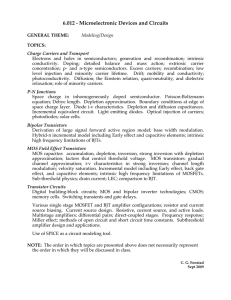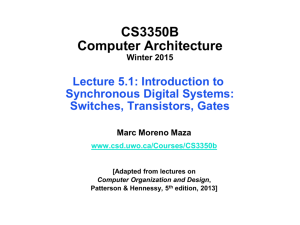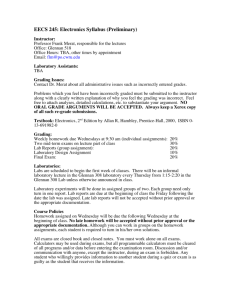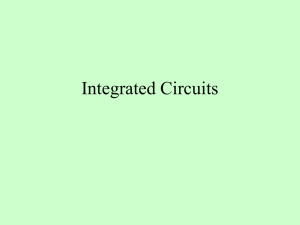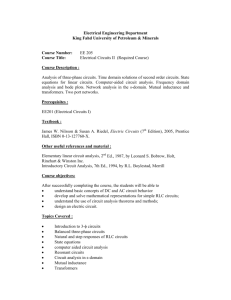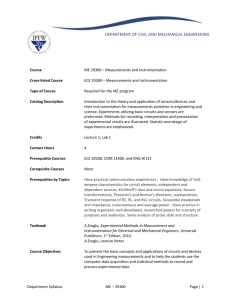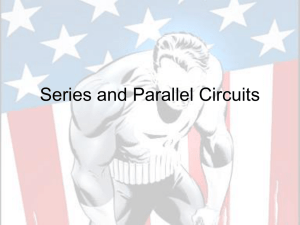Proposed contents in chapter format 1. Content introduction: Anyone
advertisement
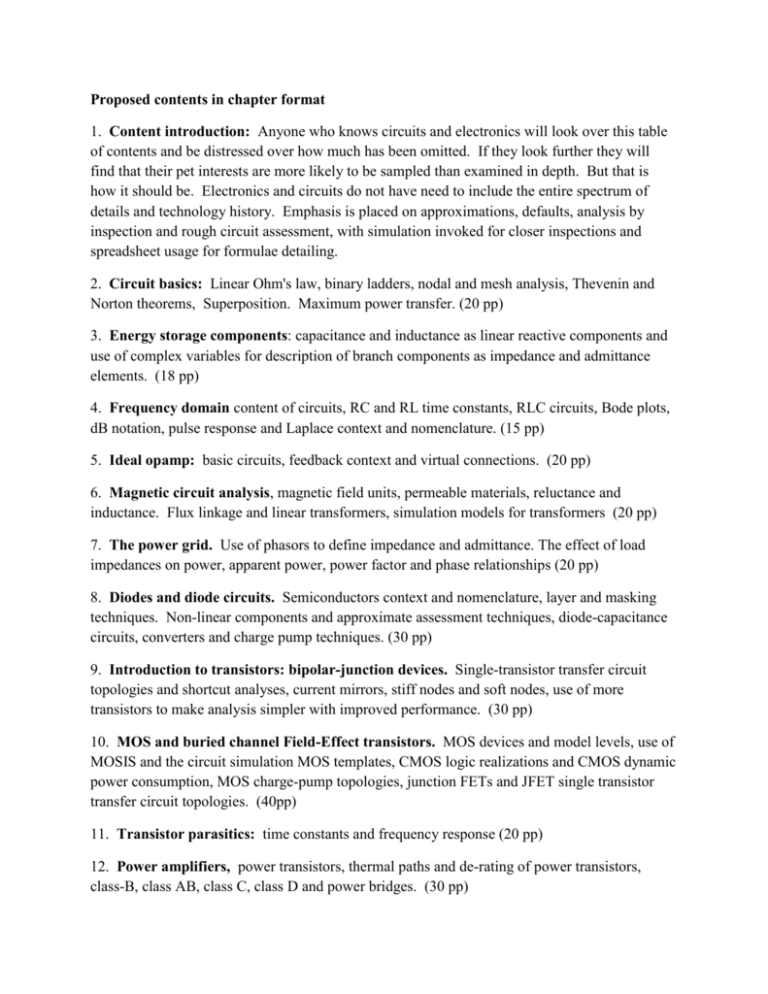
Proposed contents in chapter format 1. Content introduction: Anyone who knows circuits and electronics will look over this table of contents and be distressed over how much has been omitted. If they look further they will find that their pet interests are more likely to be sampled than examined in depth. But that is how it should be. Electronics and circuits do not have need to include the entire spectrum of details and technology history. Emphasis is placed on approximations, defaults, analysis by inspection and rough circuit assessment, with simulation invoked for closer inspections and spreadsheet usage for formulae detailing. 2. Circuit basics: Linear Ohm's law, binary ladders, nodal and mesh analysis, Thevenin and Norton theorems, Superposition. Maximum power transfer. (20 pp) 3. Energy storage components: capacitance and inductance as linear reactive components and use of complex variables for description of branch components as impedance and admittance elements. (18 pp) 4. Frequency domain content of circuits, RC and RL time constants, RLC circuits, Bode plots, dB notation, pulse response and Laplace context and nomenclature. (15 pp) 5. Ideal opamp: basic circuits, feedback context and virtual connections. (20 pp) 6. Magnetic circuit analysis, magnetic field units, permeable materials, reluctance and inductance. Flux linkage and linear transformers, simulation models for transformers (20 pp) 7. The power grid. Use of phasors to define impedance and admittance. The effect of load impedances on power, apparent power, power factor and phase relationships (20 pp) 8. Diodes and diode circuits. Semiconductors context and nomenclature, layer and masking techniques. Non-linear components and approximate assessment techniques, diode-capacitance circuits, converters and charge pump techniques. (30 pp) 9. Introduction to transistors: bipolar-junction devices. Single-transistor transfer circuit topologies and shortcut analyses, current mirrors, stiff nodes and soft nodes, use of more transistors to make analysis simpler with improved performance. (30 pp) 10. MOS and buried channel Field-Effect transistors. MOS devices and model levels, use of MOSIS and the circuit simulation MOS templates, CMOS logic realizations and CMOS dynamic power consumption, MOS charge-pump topologies, junction FETs and JFET single transistor transfer circuit topologies. (40pp) 11. Transistor parasitics: time constants and frequency response (20 pp) 12. Power amplifiers, power transistors, thermal paths and de-rating of power transistors, class-B, class AB, class C, class D and power bridges. (30 pp) 13. Power converters, AC-DC and DC-DC (20 pp) 14. Emitter/Source- coupled pairs and differential circuits, CMRR (20 pp) 15. Non-ideal opamps with finte transfer characteristics. Compensated for single-time constant (STC) profile. Slew rate and CMRR (25 pp) 16. Feedback and stability biquadratic feedback loops and phase margins (20 pp) 17. Active filter design, biquadratic portfolio topologies, frequency rescaling, table-defined profiles, RLC:CRD techniques, leapfrog techniques (35 pp) 18. UHF circuit design and interconnects as transmission lines. Smith chart analysis (25 pp) 19. Noise and distortion analysis, thermal noise nomenclature, kTC noise, shot noise, circuit optimization, dynamic range (30 pp)



